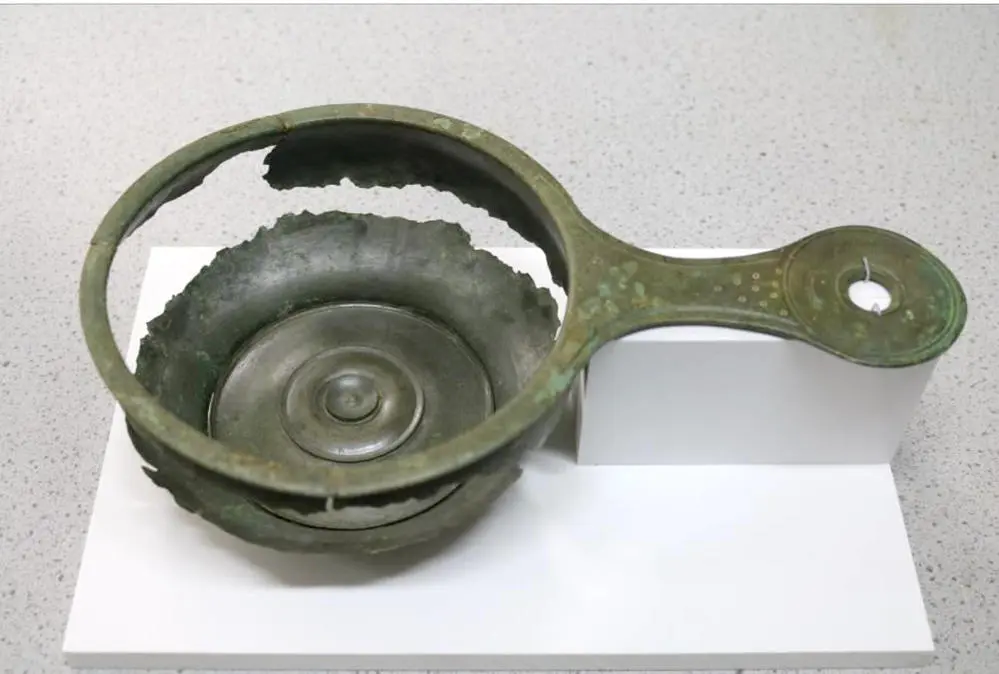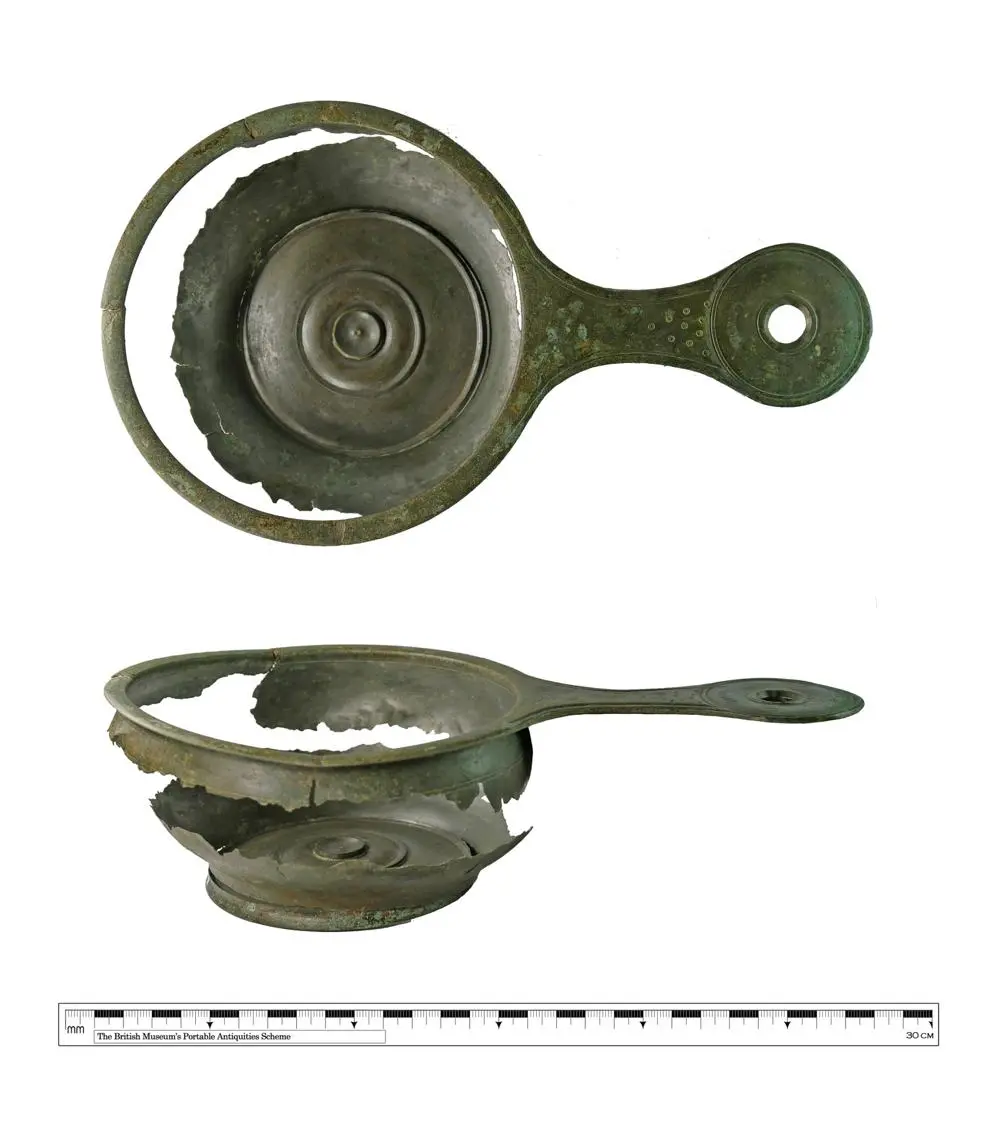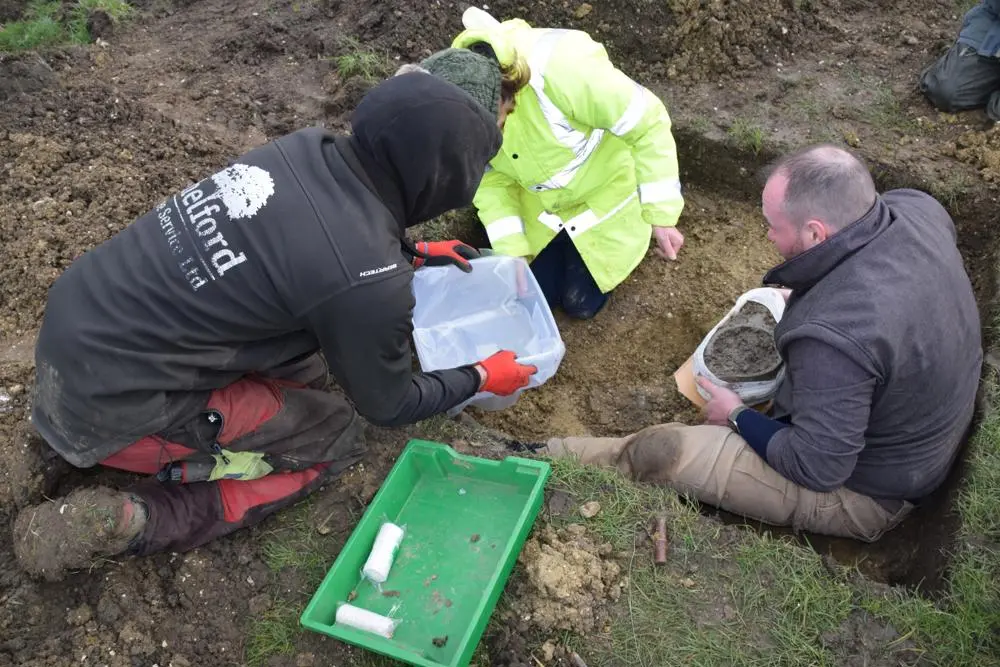A team from SCCAS was then able to carefully excavate the pan and record the archaeological context. It was then taken to the laboratory at Norfolk Museum Service Conservators, where the soil was removed and the pan conserved, ready for display.
Councillor Philip Faircloth-Mutton, Suffolk County Council’s Cabinet Member for Environment, Communities and Equality, said:
“I’d like to thank Tom for quickly recognising the significance of his discovery and getting in touch with SCCAS, so that our team could excavate the pan, record it and help to preserve it.
“Tom’s actions mean that everyone can understand a little more about Suffolk’s history. His, and the landowner’s, generosity to donate this special object mean that we can all view it on display at West Stow Anglo-Saxon Village and Museum.
“The council’s Archaeological Service, based in Bury St Edmunds, provides a fantastic public service, and truly are custodians of Suffolk’s past. They record much of the history excavated in our county, which often turns out to be of national and international importance.”
Faye Minter, Suffolk County Council’s Archaeology Archives and Projects Manager, said:
“At SCCAS, we record around 6,000 objects each year. If anyone, particularly metal detector users, discovers an object which they think is old, then we encourage them to contact us. We offer a free service to identify and record archaeological finds.
“If the object isn’t classed a treasure, we will borrow it to create a detailed record and then return it to the finder. In the case of this Roman pan, the landowner and Tom kindly donated it to the museum.”



